One of my favourite environments to photograph is a protest. Over the last few years I’ve had plenty of opportunities to document all kinds of demonstrations and protests; peaceful, violent, and everything in between. I think that this kind of documentary offers insight into the ways society communicates in groups in a really unique way, and I really try and make images that are significant, emotional, and hopefully long lasting.
Protests are incredibly diverse situations, and photographing them can call upon all kinds of techniques, both relating to the camera, and to people skills. I find that navigating these events with different kinds of camera can have a real effect on the resulting images, and I wanted to discuss some of the things I’ve found in particular in terms of the differences in shooting with a rangefinder vs an SLR.
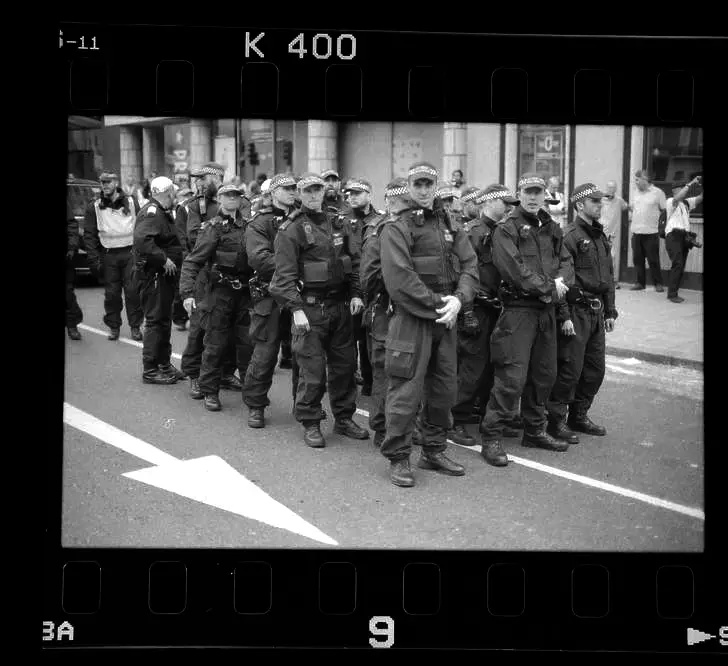
Until very recently I’ve only really shot rangefinders for the majority of my work, including most protest coverage, as that’s simply the method I prefer. However I recently decided that I wanted to see how autofocus, as well as other aspects of SLR cameras could be useful to my workflow, and started to shoot with the Nikon F4. When I discuss rangefinders/SLR in this article my experience is mostly centred around the Leica M6 and Nikon F4. I know there are some cameras in each category that may behave differently to these, but I think that in use my experiences with these are generalisable enough to the majority of use cases.
Size/Weight
One of the main draws of a rangefinder system is the weight – a camera and lens combo is more likely than not going to weight less as a rangefinder than it’s SLR equivalent. This can be due to a few factors – no autofocus system, smaller batteries, cloth shutter, no mirror/prism setup. Although I didn’t have many issues while shooting with the weight of the F4 I do notice myself tireder at the end of an average day as a result of the larger combined weight of camera body and lenses. It doesn’t help that I tend to carry a second lens with the SLR kit, whereas with a rangefinder I am normally just happy with one (usually a 90mm).
I’d say the rangefinder wins in terms of practical size and weight, especially when I need to be able to move quickly around a scene, and react with my camera to events happening around me.
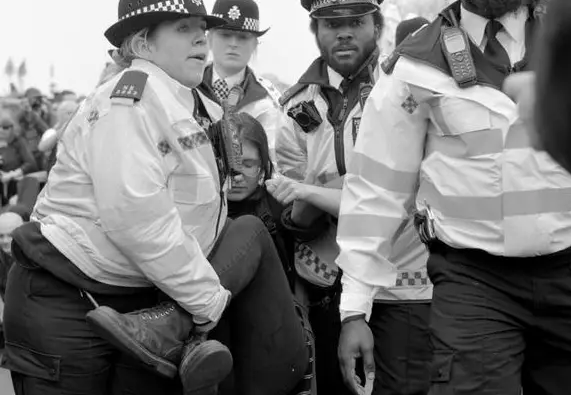
Focal Length
I usually prefer to shoot on longer focal lengths for general purpose photography, but for protests I usually remain at either 50mm or 90mm. I couldn’t go longer than 135 simply because of the restrictions of the rangefinder, so an SLR offers me something I’ve wanted to incorporate into my work for a while now – 80-200mm.
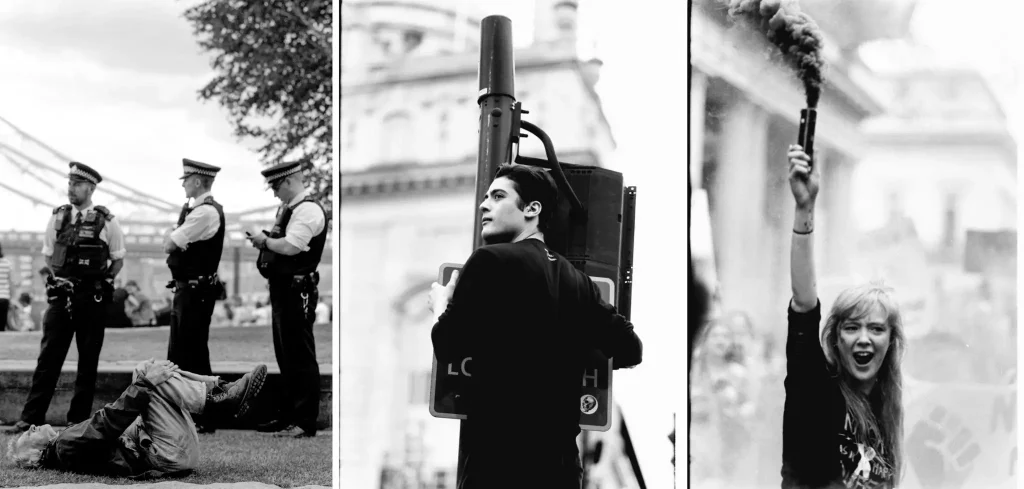
The focal length restrictions of rangefinders don’t really affect people who prefer to shoot wide, but for photographers like me, who tend to spot their compositions a little further away, it can feel frustrating to not have the reach. I’ve settled into shooting the majority of my work in 90mm, and have been really pleased with what that lens offers me.
However I’ve always wanted to at least try my hand with a proper telephoto-zoom, and the 80-200 really fulfils that curiosity. I tried combining a 50mm prime with the 80-200 zoom, by shooting the fast action closer in on the 50, and when things were quieter, or when I was further away, switching to the 80-200, and usually leaving it at 200mm.
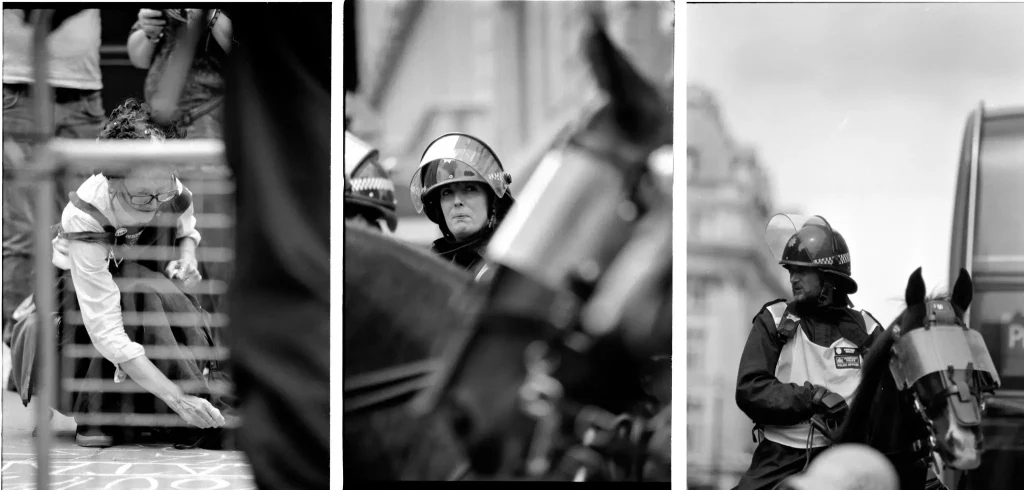
The results from this were really pleasing, although I definitely need to spend more time at the longer length to really feel out the edges.
I think that in terms of focal length both styles of camera will deliver, but you really need to be aware of the way you see. I’ll happily shoot at 85/90mm on either system, but when it comes to needing longer than that the SLR is the only choice.
Composition, and Peripheral Vision
Composing through a rangefinder is by far my favourite way to make an image. I take full advantage of the frame-lines, especially on 90mm, to review as much of the environment as possible before surgically positioning my frame around what I want to include, focusing, recomposing, and then shooting. I have a lot of practice with this method, and can execute a shot very quickly. 90mm is the focal length I see in, which means often I have already done most of the framing before lifting the camera to my eye.
This meant it was natural for me to do the same with the SLR, simply looking at the scene and pre-composing before bringing the camera to my eye. However this became a little trickier when using any lens other than 90mm, and I found myself making adjustments when using 50 and 200mm. As I said before, I need to learn that longer focal length a little better, and hopefully this will make me more efficient at pre-composing.
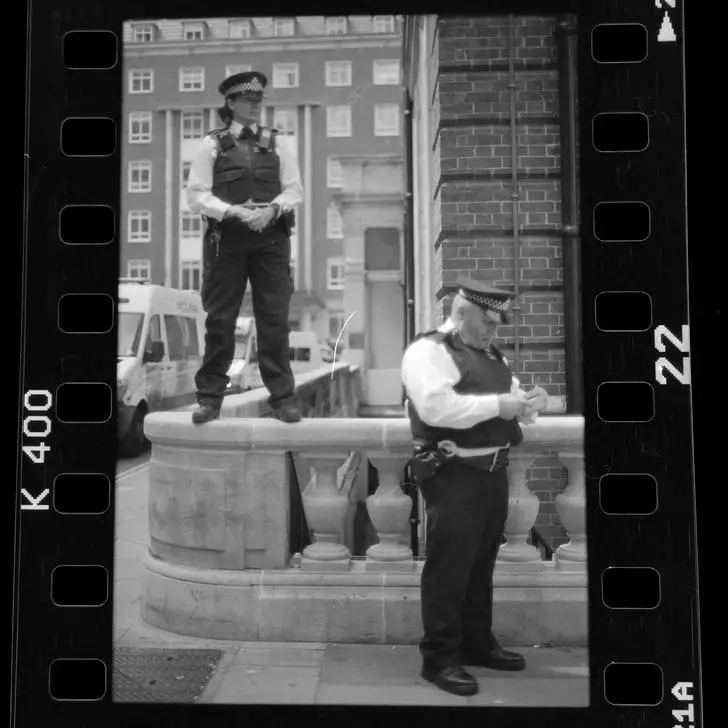
Something that did affect me quite a bit in practical use was the ability/inability to see beyond the frame. One of my favourite things about the rangefinder for fast paced with is the affordance to see beyond the limits of your frame. I’ve shot with rangefinders my entire career, so I think I actually take this for granted – so when it came to using an SLR I found myself with blinkers on, unable to see what was going on around me.
This means that although they are not especially bad there is more wrong with my SLR frames than my rangefinder frames when it comes to pure precision – especially with unclean edges.
For example this shot has a character on the right hand side I didn’t want to include, something that I would have absolutely dealt with through a rangefinder.
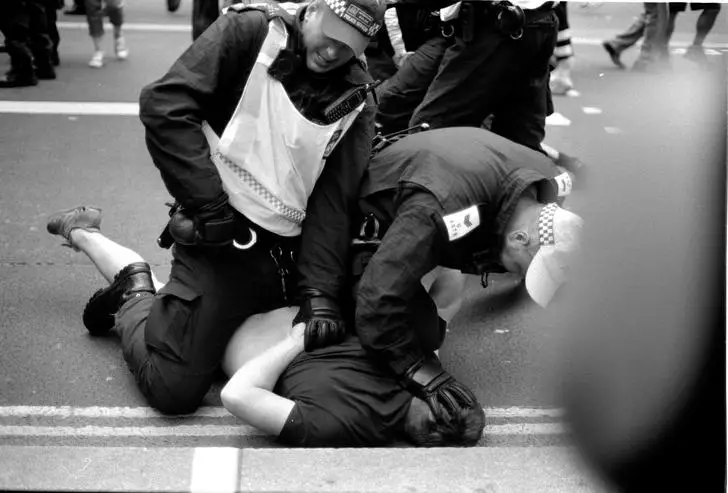
I’ve never had an issue with this in the past, as I have felt like I have full control over what I’m including, and not including, across my entire frame. With the SLR I found myself without this ability, and the work suffers from it. This will be something I really need to work on, as it’s never presented a problem to me in the past, but clearly I’ve become complacent in a certain area, and I would rather address that.
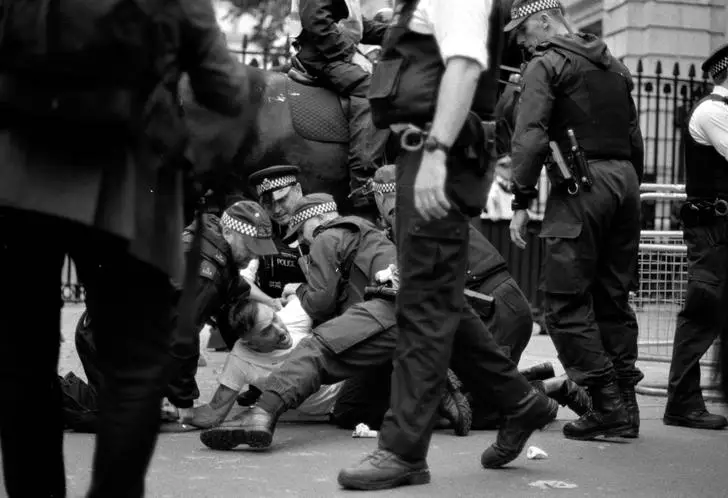
There’s also the matter of safety. Being aware of your surroundings is immensely important during a protest, and anything that limits your awareness can be incredibly dangerous. I’ve never felt worried that I couldn’t see what was going on when using a rangefinder, as I can open both eyes as well as see outside of my frame. SLR’s lock you into tunnel vision, and I found myself in a really different mindset as a result.
Somewhat related to this is the direct vision I lose from shutter blackout on the F4, from the mirror rising when the image is taken. This led to missing what I felt was the shot I was going for a couple of times, as I’m used to being able to constantly understand what is going on in and around my frame. Losing that damaged my timing, but hopefully it will be something I can adjust to.
I think that I prefer rangefinders in this area, but only because I am so familiar with the way they operate, and the way to see “around” them. Hopefully with time I will bring my skill with SLR’s to this level, and not be held back by a lack of peripheral vision, timing issues with shutter blackout, and having learnt my way around the longer focal length.
Shutter Speed
Most film rangefinders that I have shot with have a maximum top shutter speed of 1/1000ths which I’ve definitely found limiting in the past. I enjoy shooting 400 speed film more than any other, but in bright sunlight this can mean compromising my aperture in order to get the exposure I want. I started using ND8 filters, which reduces my exposure by three stops – normally enough to make things tolerable, but in a protest situation I don’t enjoy fiddling with filters as the light changes.
The F4 offers a top speed of 1/8000ths, which makes a great difference. I’m not the happiest with the exposures so far, but I will have to get to grips with the meter and other aspects before I am comfortable in understanding how to get a similar exposure to the results from my M6.
The F4, and majority of SLR’s with 1/4000ths or higher shutter speeds have the edge here.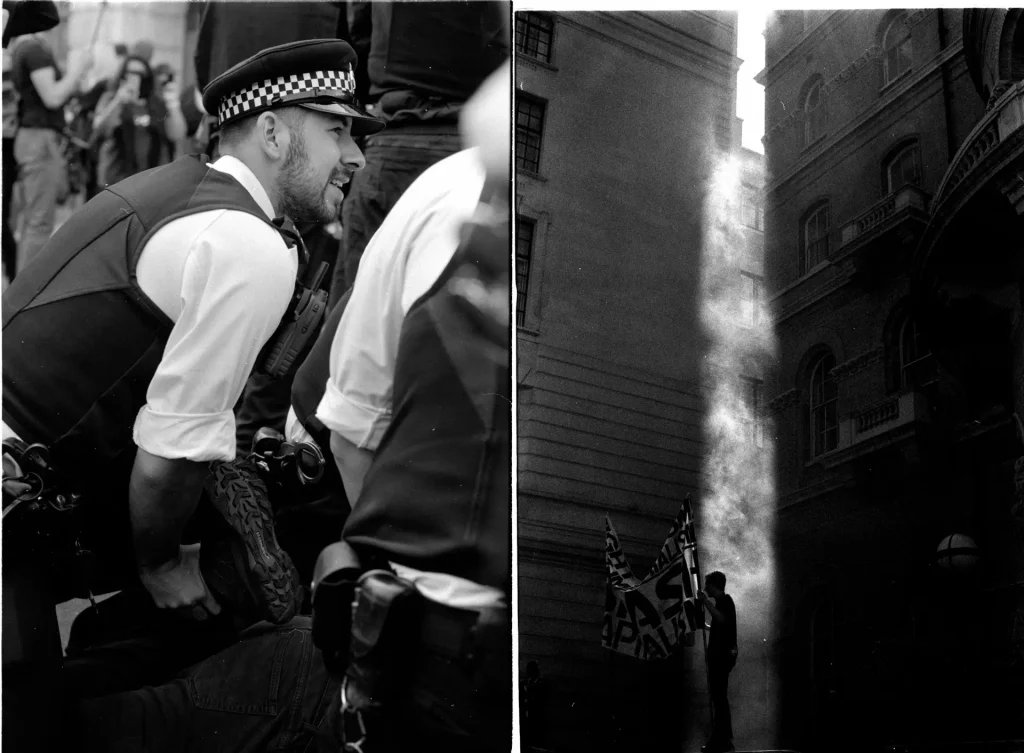
Nikon F4, Kentmere 400
For lower speeds both cameras perform very well. I really enjoy panning for motion, although this is easier with a digital camera where I have multiple attempts and can gauge exactly how the affect looks at different speeds. I was expecting that the size and weight of the F4 would make it harder to hold steady over a period of time, but was happy to find useable results down to 1/2 a second. Leica’s have always delivered in this area, and I have no trouble with exposure down to a second, either held steady, or panning.
I think rangefinders have nicer capabilities for wide aperture lenses – the notorious Noctilux f/0.95 being the obvious example. An equivalent SLR lens would be terribly unwieldy, and much harder to focus. Wider apertures can mean faster shutter speeds when appropriate, but I’ve never really deliberately stopped further open for the specific reason of wanting a higher shutter speed. Instead I prefer to start as wide open as possible, then shift lower if I am too far overexposed at the maximum shutter speed. For low light use I much prefer relying on the larger aperture lenses I have for my Leica than the f/1.4 50mm which is the largest aperture lens I own for my Nikon.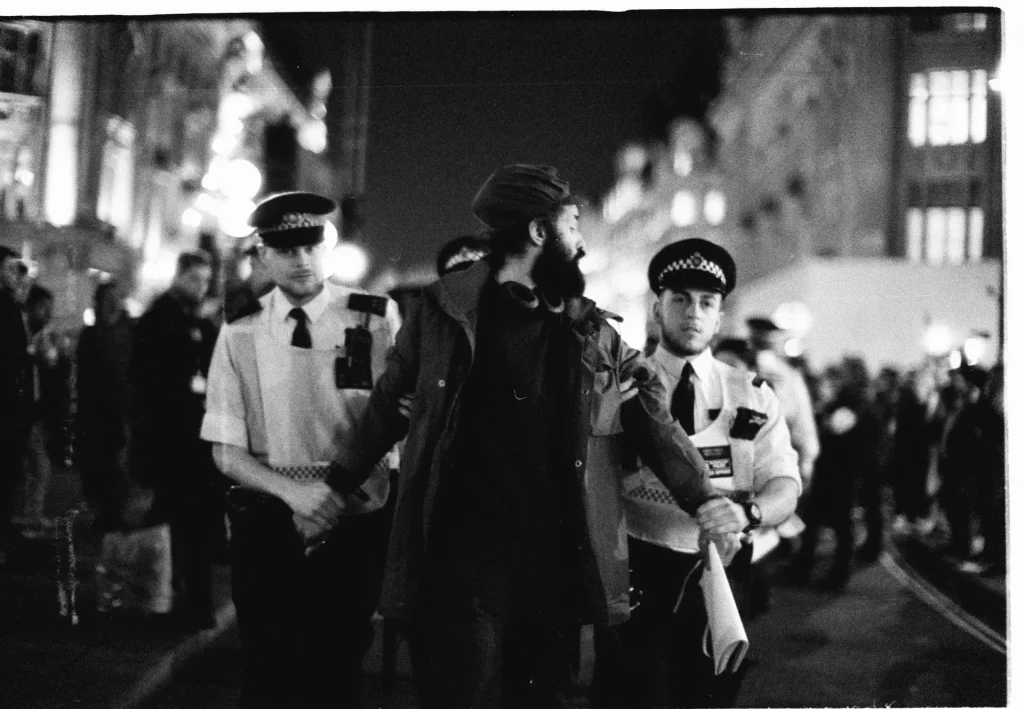
Leica M4, Delta 3200 @ 8000, 7artisans 50mm f/1.1 @ 1.1
Mechanical speed
There are a few differences in the mechanical operating speed of each camera, which some people may find difficult. The M6 requires that I wind on for each shot, whereas the F4 automatically winds. There is the option of a Leicavit, which some users say works for them, but I just don’t see it as the kind of tool that would work for me. I can change a roll of film in my M6 in around 45 seconds, whereas the F4 is much faster, especially with the auto-rewind. I do like the option to wind by hand, which really saves the batteries, and brings the timing to around the same as the M6.
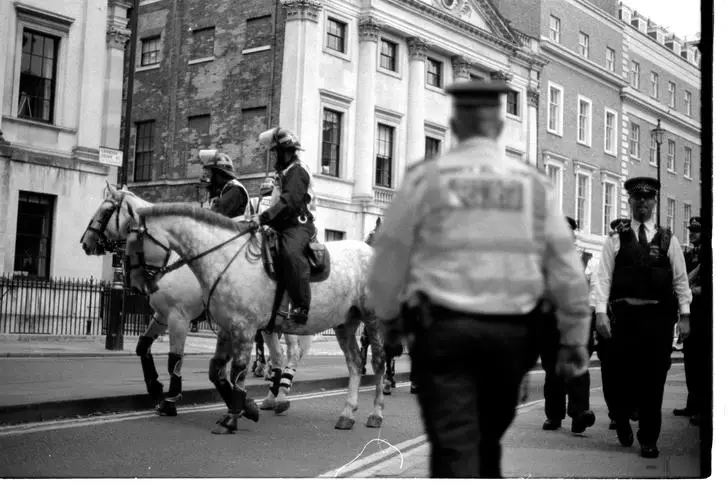
Neither camera is especially slow – it depends on the way the user wants to work, and how familiar they are with the workings of the cameras.
Focusing Speed
I can focus the rangefinder on my M6 about as quickly as the F4 focuses in good light, so I’d say it’s about a draw on that one. I enjoy the freedom in the autofocus system, especially as it’s only a central point, so very similar to my M6. I found a few times that the markings of the focus area were faint, but most SLR’s will have a little red square light up, which solves that issue.
Pre-focusing on my M6 is an aspect I use a lot, and all of my lenses have a focusing tab (either inbuilt, or rubber add-ons) which leave it to muscle memory as I raise the camera. I also find it easier to move with my subject with the M6, whereas with the F4 I find myself focusing and refocusing constantly, never sure if it’s dead on.
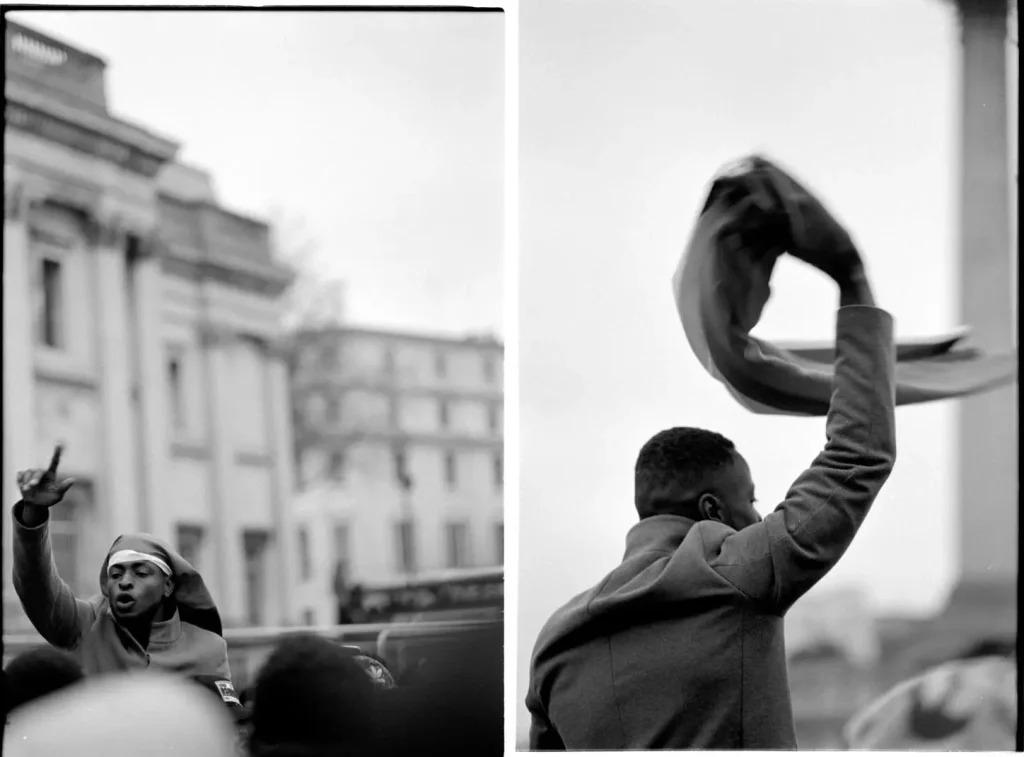
In low light or rapidly moving environments I prefer my rangefinder at the moment, as I trust my ability to manually achieve focus more than I trust the SLR. I also find SLR’s in general difficult to manually focus because I have trouble seeing it clearly, so the F4 is generally autofocus only.
For me personally the M6 is the easier camera for me to focus reliably and consistently in all conditions, including fast paced scenes requiring fast reactions.
Reliability
There are a few details about the cameras that are neither really positive or negative, but simply features of that particular camera. For example the F4 will cycle through the first few dead shots on a roll of film, to then go on a shoot usually exactly 36 frames. With my M6 I can normally load carefully enough that I manage to squeeze 38-40, but often end up with a half-first frame.
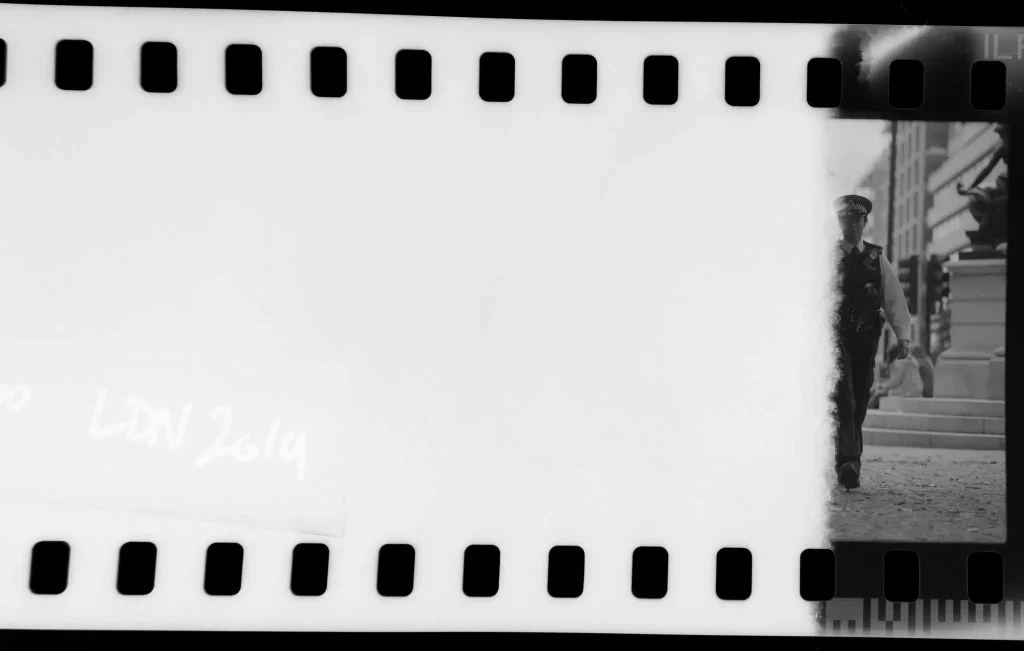
Both the M6 and Nikon F4 are known as very reliable cameras, and many other SLR/Rangefinders share this. They are rugged in different ways, both sturdily built, but with the F4 having the edge with weather sealing. Both cameras are staples for photojournalists, and have been used in all kinds of conditions.
The F4 has a film window, although my memory isn’t that bad yet – I know what film is in each of my cameras most of the time.
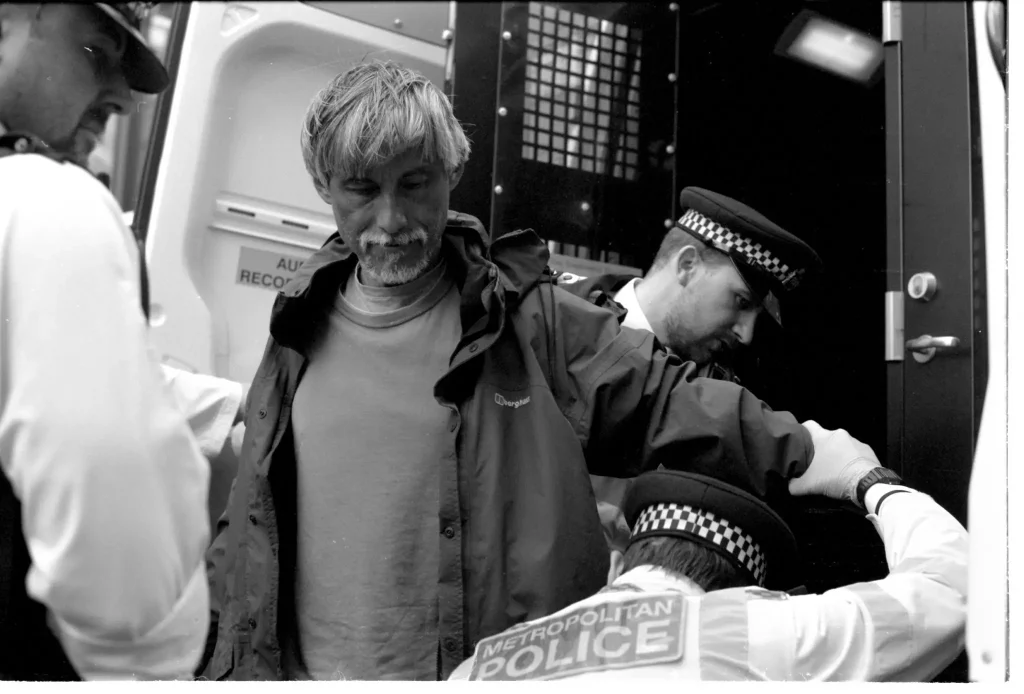
I haven’t had to worry much about reliability with either camera, however there were a few things about the F4 which slowed me down to begin with. For example at one point I was very worried something had broken, as everything was refusing to work, and the red warning light was flashing. Turns out I had accidentally knocked the R2 rewind lever, and hadn’t noticed. The M6 in comparison is incredibly simple, with very little to confuse a user or to go wrong. The F4 and other SLR’s tend to have so many moving parts that when something is acting up it can take a while to figure out exactly what specifically is going wrong.
For an SLR I really appreciate the external manual controls of the F4. Having the shutter dial, ISO, even exposure compensation not locked away from me in menus is underrated.
The viewfinder in the F4 is not something I enjoy – far more clutter than I’m used to. I really dislike the more modern meter, and the arrows indicating focus only confuse me, as I’m used to the arrows in my M6 meaning exposure. I think the M6 meter is so intuitive and easy, I wish there were a way to implement it into all of my other cameras. I’ve taken to metering as close by eye as possible and using the F4 manually, only checking the meter for a rough confirmation instead of relying on it entirely. This means I fix exposure for the shadows at the start of the protest and more or less leave it there – unless the light changes drastically, at which point I set it again.
Form Factor
When it comes to the form factor both cameras appeal to different people in different ways. The SLR seems more “serious” whereas I find the M6 is friendlier. When it comes to the way people treat me with either I have had mixed responses. My body language with the M6 is more natural, as it is more “me” whereas the F4 makes me seem like a paparazzo.
People definitely notice my F4, whether it’s up to my eye or by my side. This has meant that a few attempts at candid portraiture (usually a non-issue with my Leica with any lens) have resulted in failure. If I point my 200mm at someone there is no avoiding that they are my subject. With the M6 I am far more able to use “tricks” and social engineering to pretend that I was photographing something else.
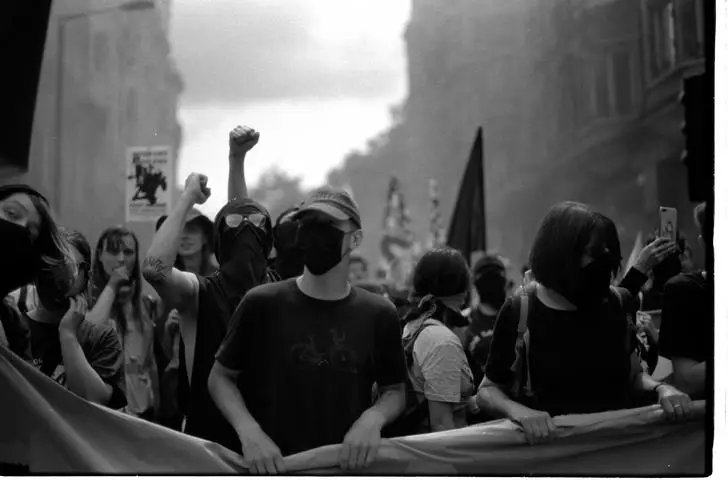
Protestors, counter-protestors, police, and other journalists tend to approach me differently depending on which camera I’m carrying, and I definitely think that the M6 is less confrontational overall.
Value
One of the most practical reasons I’m hoping to integrate an SLR into my protest photography is that I have found myself increasingly in situations where the mood of the crowd is making me think twice about my safety. I’ll always value a shot more than my camera, and occasionally my safety, but that moment of hesitation is something that stays with me. My Leica M6 cost around £1500, and I had it CLAed soon after acquiring it, bringing the cost up a little. My 90mm APO is around the same, making my “standard” Leica everyday carry worth around £3k.
In contrast my Nikon F4s, 50mm 1.4, and 80-200mm cost me around £300.
I can run the same film through both cameras, and take roughly the same images with them.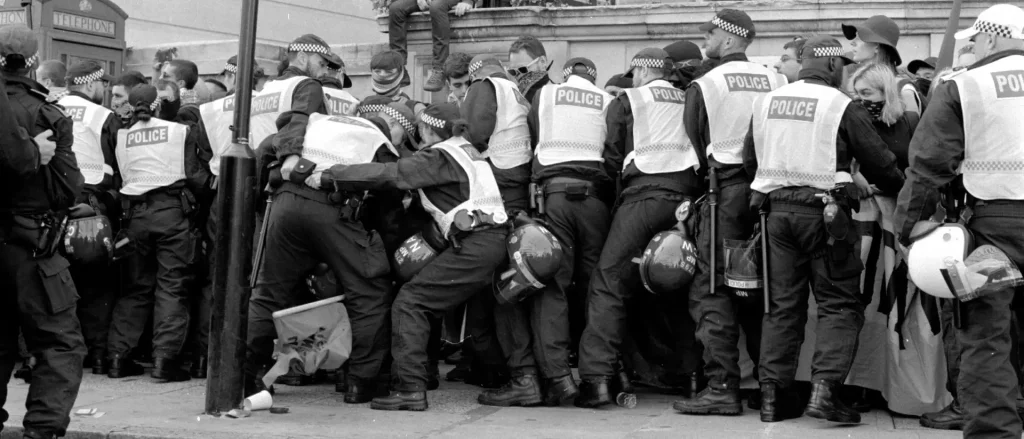
Nikon F4, Kentmere 400When it comes to which camera I’d rather be using to fend off bottles being thrown at myself and other journalists by protestors, or while being shoved aside by overzealous officers I know I’d feel much safer holding the F4.
Conclusions
In general I was happy with the results from my foray into SLR photography, especially with the potential to explore the possibilities of longer lenses. As much as I love using my M6 I think the F4 definitely has a strong argument for use as a protest camera specifically – the cost alone swings the scales largely in it’s favour. Something I didn’t bring up in that specific point was accessibility – to any aspiring photojournalist a film SLR will offer much better value for money, and offer a more diverse machine to learn with.
In protest environments I didn’t find myself behaving any different, and I don’t think any of the images seem to be in anyone else’s “style” than my own. I think this gives me to confidence to continue using both systems, although I will lean towards the F4 in situations I feel it may turn violent, or be overly crowded. The difficulty with peripheral vision is one I will have to address, and I welcome any advice on this in the comments.
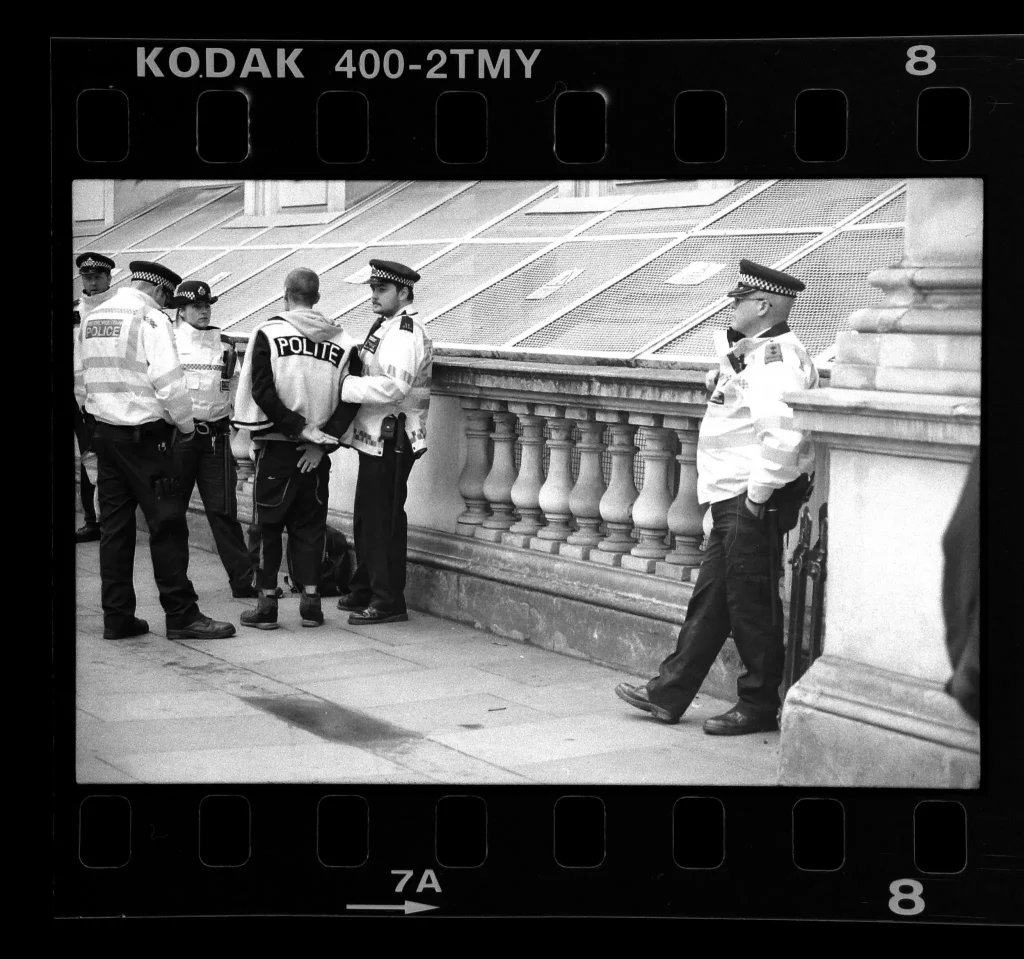
The M6 is still my favourite camera for more “general” street photography and reportage work. It will remain my everyday carry, and is unlikely to be replaced anytime soon. Its size and weight make this a non-decision, but I also feel that the camera is just more me. I know that’s as subjective as it gets, but with most areas of photography that’s as specific an answer as you’ll get as to why one thing works where something else does not.
If you’ve enjoyed this piece you might enjoy some of the other writing I’ve produced for 35mmc. If you like my work please consider following me on Instagram, here. I buy all of my film from Analogue Wonderland.
Share this post:
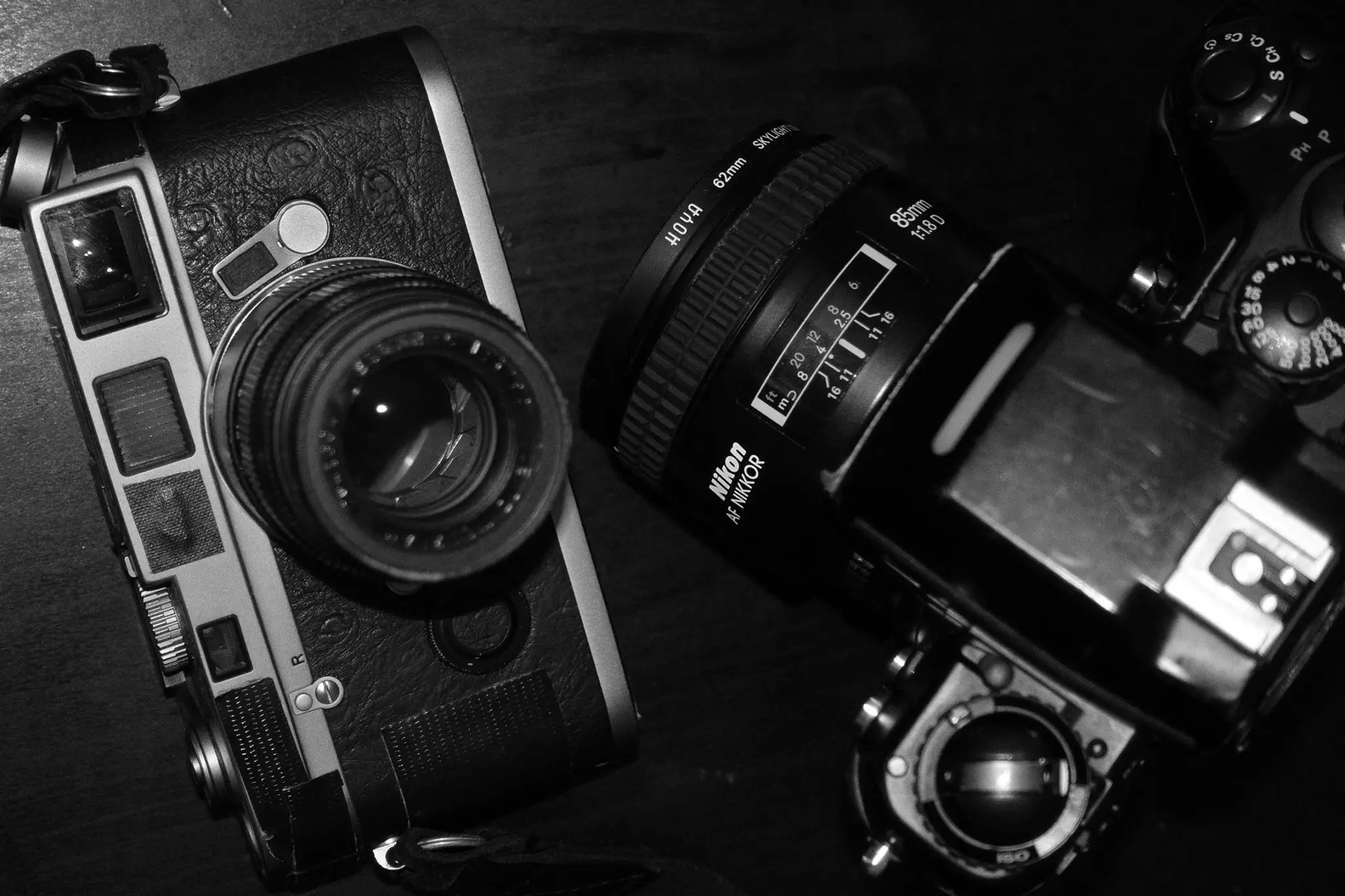








Comments
Gav on Rangefinder vs. SLR – Protest Photography – by Simon King
Comment posted: 04/10/2019
That beast is a bloody tank innit! I love mine.
Comment posted: 04/10/2019
Philipandre on Rangefinder vs. SLR – Protest Photography – by Simon King
Comment posted: 04/10/2019
Mark Kronquist on Rangefinder vs. SLR – Protest Photography – by Simon King
Comment posted: 04/10/2019
Comment posted: 04/10/2019
Zvonimir on Rangefinder vs. SLR – Protest Photography – by Simon King
Comment posted: 04/10/2019
Comment posted: 04/10/2019
Comment posted: 04/10/2019
Steve Wales on Rangefinder vs. SLR – Protest Photography – by Simon King
Comment posted: 04/10/2019
Comment posted: 04/10/2019
MS on Rangefinder vs. SLR – Protest Photography – by Simon King
Comment posted: 04/10/2019
But sometimes you just have to do the job no matter the price of the gear. If you can buy cheaper but good rangefinder and glass (Bessa R jupiter 8) or use what you have and hope for the best. Some times bad things happen and we have no control over them. We can only try to reduce the damage. I’m not saying we should embrace them but calculate the possibility and take such event with calm.
BTW can you write more about your BW process? Your images almost doesn’t have grain. How is this possible? Delta 3200 at 8000?! I make it at 1600 in HC-100 and grain is very prominent (looks ok, but it’s really there)
Comment posted: 04/10/2019
eric on Rangefinder vs. SLR – Protest Photography – by Simon King
Comment posted: 05/10/2019
Great Photographs.
Great journalism work.
For me, the Rangefinder is the best because light, quiet, discret, small, and great lenses. But limited for tele lenses.
The SLR, of course I use Nikon too, but not great F4 because too big, and too heavy, but FM3 A, with 50 1'8 ais pancake, 28 2'8 ais, and 105 ais 2'5.
The Leica and the SLR are great, deliver nearly the same results.
I will just say that I prefer the Leica, which is really faster.
Comment posted: 05/10/2019
Comment posted: 05/10/2019
MARC GABOR on Rangefinder vs. SLR – Protest Photography – by Simon King
Comment posted: 05/10/2019
Comment posted: 05/10/2019
jeremy north on Rangefinder vs. SLR – Protest Photography – by Simon King
Comment posted: 05/10/2019
While I like the precision of RF focussing, there is no way that I can do it as quickly as an F4. I am not put off by the momentary blackout as the mirror flips up, I have two eyes which also helps when other stuff is happening so that whole rangefinder window angle being bigger is not an issue. I'd go so far as to say that what a lot of people say about taking pictures with rangefinder cameras is a repetition of what they've read or heard elsewhere rather than actual personal experience.
It's the same as those who say they shoot film because it slows them down or for the look.
Comment posted: 05/10/2019
Paul Turner on Rangefinder vs. SLR – Protest Photography – by Simon King
Comment posted: 05/10/2019
Comment posted: 05/10/2019
STUART on Rangefinder vs. SLR – Protest Photography – by Simon King
Comment posted: 05/10/2019
Comment posted: 05/10/2019
Steve Wales on Rangefinder vs. SLR – Protest Photography – by Simon King
Comment posted: 05/10/2019
David Hill on Rangefinder vs. SLR – Protest Photography – by Simon King
Comment posted: 05/10/2019
Comment posted: 05/10/2019
David Hill on Rangefinder vs. SLR – Protest Photography – by Simon King
Comment posted: 05/10/2019
Comment posted: 05/10/2019
David Hill on Rangefinder vs. SLR – Protest Photography – by Simon King
Comment posted: 05/10/2019
Ivan on Rangefinder vs. SLR – Protest Photography – by Simon King
Comment posted: 05/10/2019
Comment posted: 05/10/2019
Tim Clark on Rangefinder vs. SLR – Protest Photography – by Simon King
Comment posted: 24/12/2019
Comment posted: 24/12/2019
Stefan on Rangefinder vs. SLR – Protest Photography – by Simon King
Comment posted: 15/05/2020
For use with the F4 you may consider an AE Action Finder DA-20. (https://www.mir.com.my/rb/photography/hardwares/classics/nikonf4/prisms/index2.htm) although it may be hard to find one (currently i see only the DA-1 for F2 and F, DA-2 for the F3 and the DA-30 for the F5 on eBay) and costly.
Also your choice of the M6 and F4 is one of two extreme ends. For comparison with the M6 a smaller mechanical slr may be more logical. The F3 and F mentioned by Mark, and the F2 are just the same but less automated, the F5 then lacks decent dials. Smaller Nikons were mentioned, the FM3a and FM2 but neither those breath the Spirit of the Leica M. The closest to come there are the Olympus (OM1n, OM2n, ..), and on both sides of that the Pentax KX, Pentax MX and Pentax LX. The LX gives the opportunity to use the unique FC-1 action eyepiece with the FB-1 system finder. That will give the opportunity to have the Peripheral Vision you miss with the Nikon. The LX isn't cheap and do get a CLA for the LX first to avoid the imminent Sticky Mirror Syndrome though. It will still be cheaper than an M6.